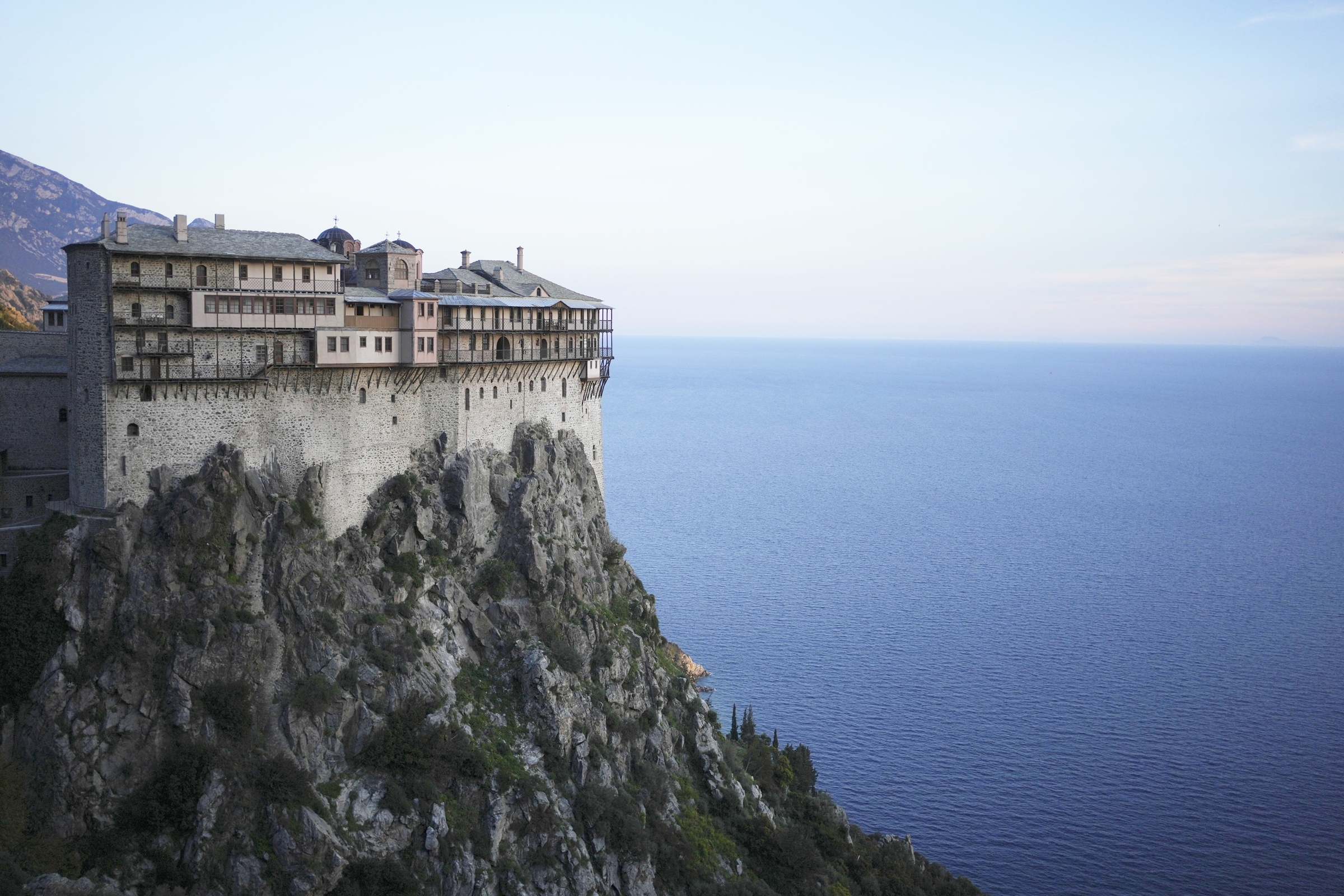 |
The Simonos Petra (Simon's Rock) monastery, nestled on Mount Athos in northern Greece since the 13th century, is home to a diverse Eastern Orthodox community. It welcomes monks from around the world, including converts from countries where Orthodoxy isn't the dominant religion.
It is one of 20 self-governing, all-male monastic communities on Mount Athos (also known as the Holy Mountain).
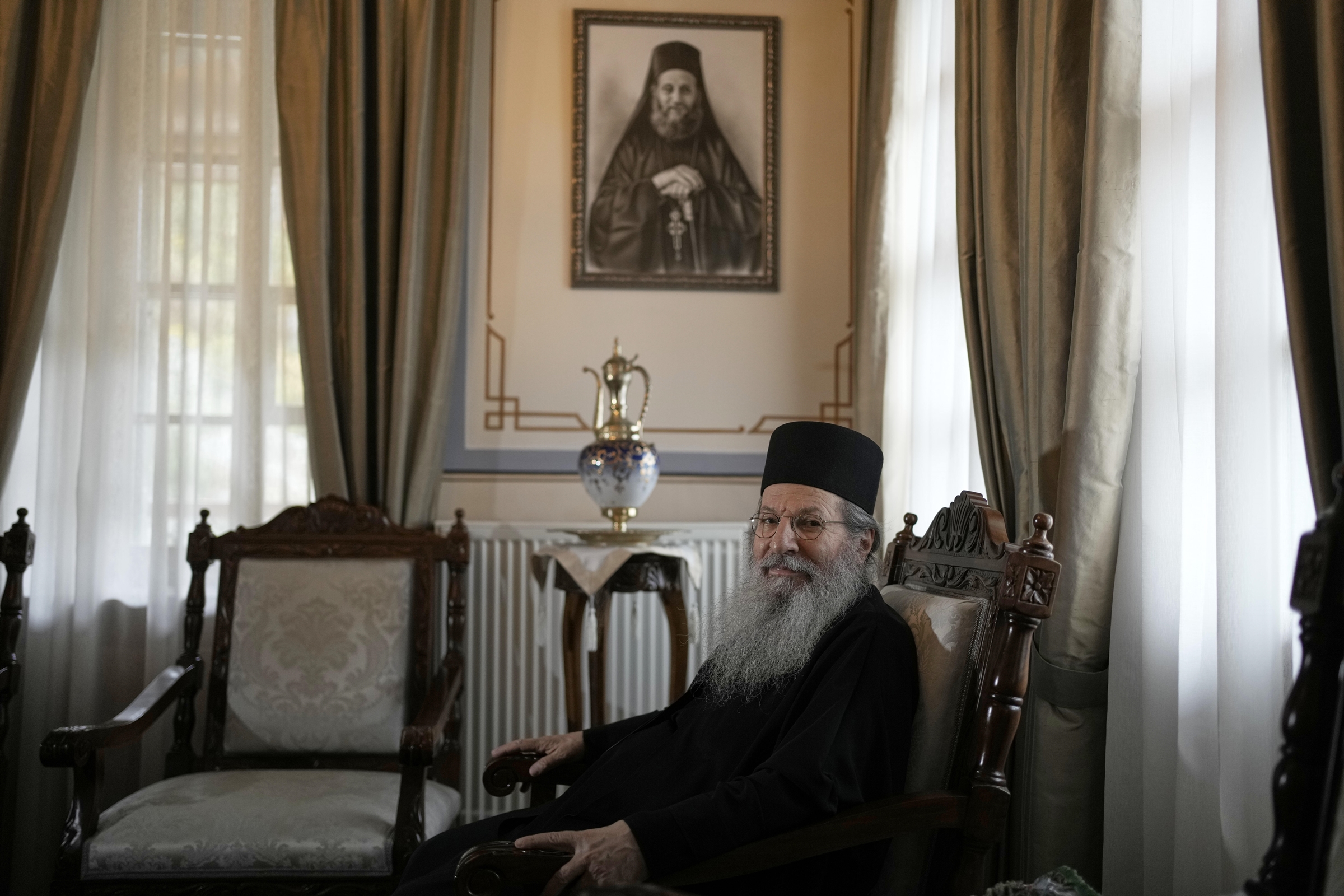 |
Abbot Elesios, the head of Simonos Petra, explained the international mix: "Spiritually, there are no borders because the Holy Mountain has a universal character," he said.
The monastery welcomes any man who wishes to visit. Following a tradition over 1,000 years old, women are forbidden from the entire peninsula, considered the domain of the Virgin Mary. Men of other faiths can stay on Mount Athos for a few days as visitors, but only Orthodox men can become monks.
"We are always open to everyone with love," Abbot Elesios said.
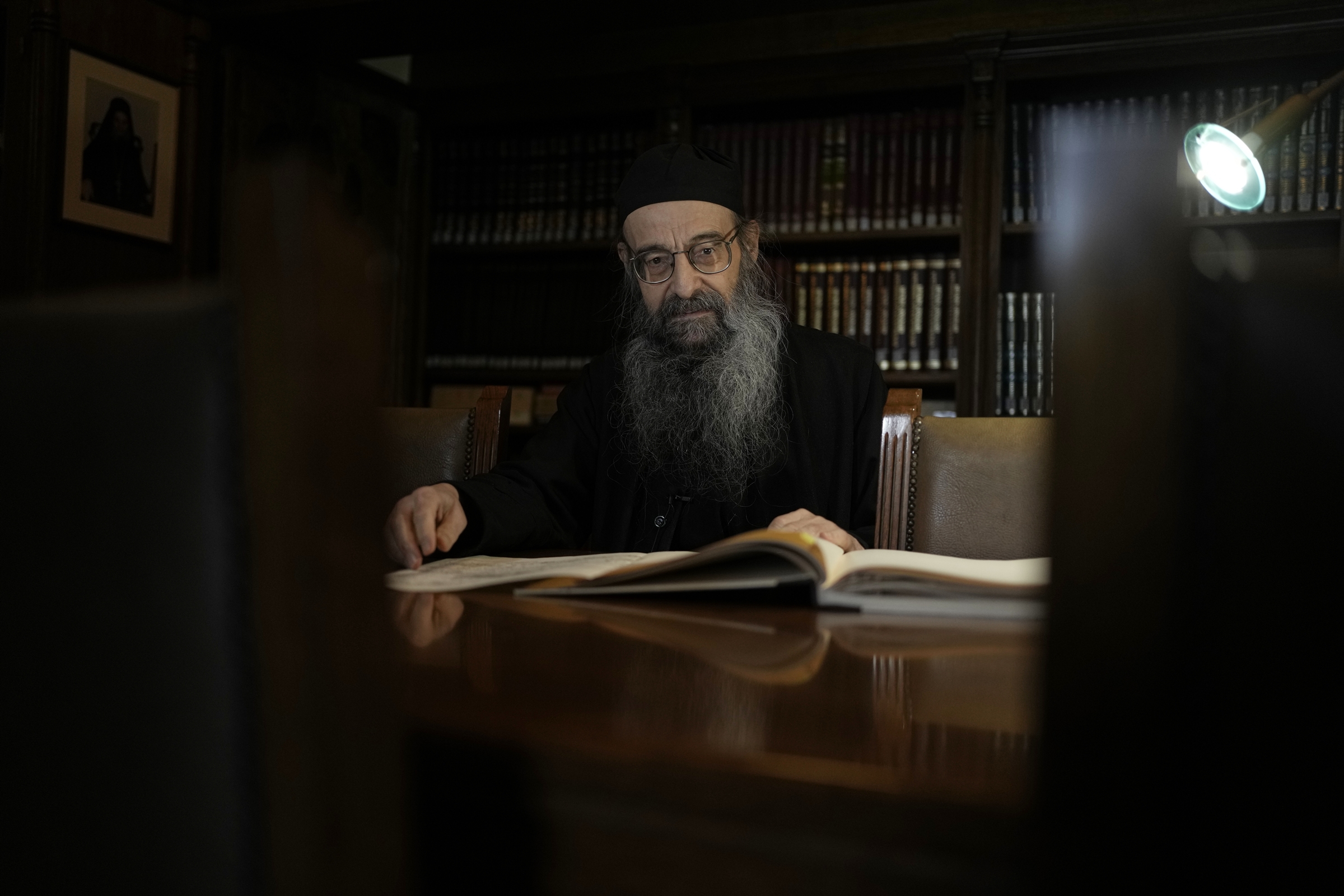 |
Father Makarios, a Frenchman, is the monastery's librarian. He is one of the longest-serving non-Greek monks.
He began his spiritual quest in 5/1968 as a young man, witnessing the social upheaval stemming from student protests in Paris. This search led him to Mount Athos in 1975.
"I found people who understood me and accepted me. They didn't judge me," he said, explaining that he converted from Roman Catholicism to Orthodoxy and has lived at Simonos Petra for 46 years.
The Eastern Orthodox Church is the second largest Christian communion after the Roman Catholic Church. It has played a prominent role in the history and culture of eastern Europe, Greece, Russia, the Caucasus, and the Near East.
For the first millennium of Christianity, the Eastern and Western churches were one. In the 11th century, differences between East and West led to the East-West Schism of 1054, forming the Eastern Orthodox Church and the Roman Catholic Church.
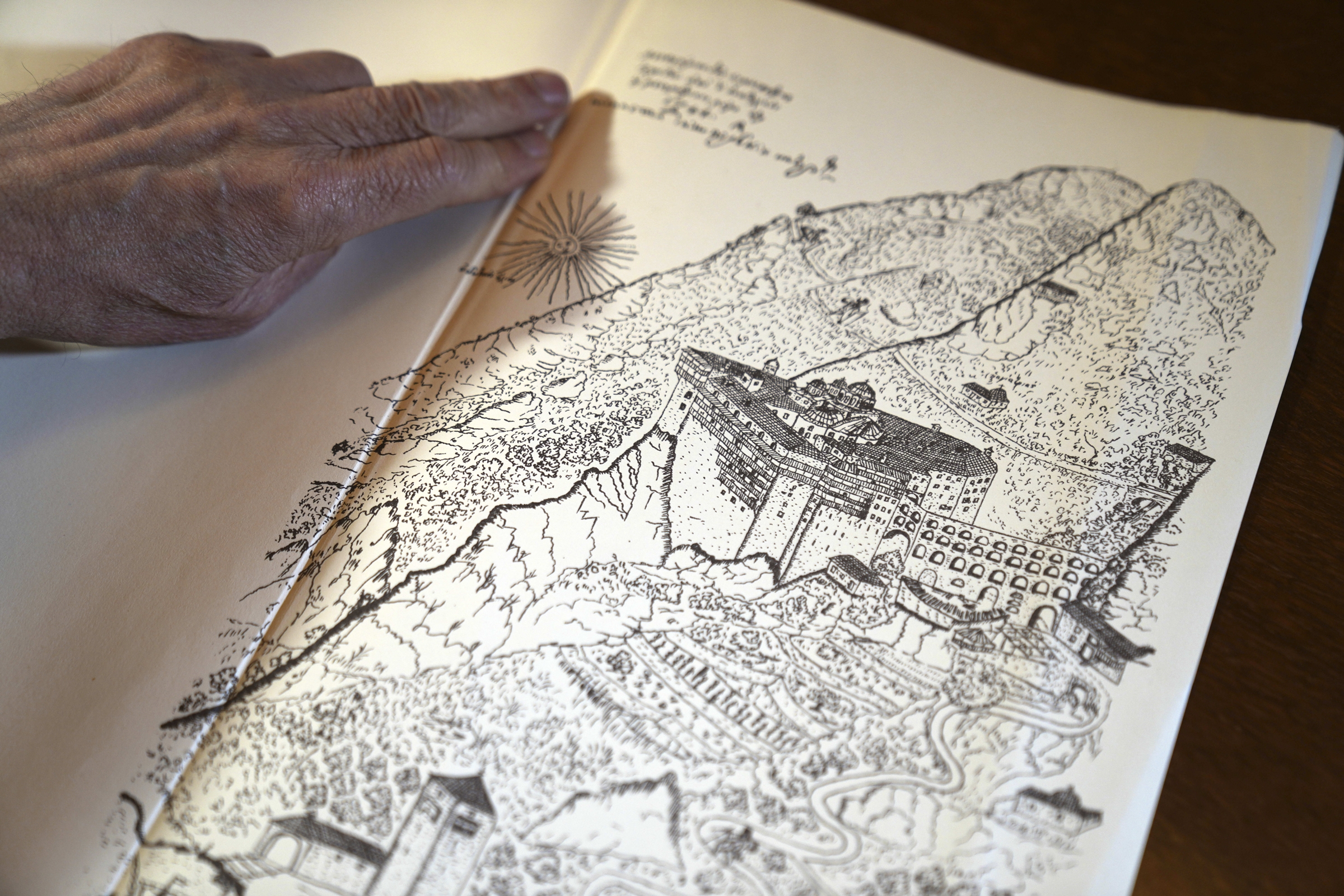 |
Father Makarios displays a 1744 map depicting the Simonos Petra monastery.
The monastery was founded in the 13th century by Simon, a hermit who lived in a cave on Mount Athos. The Virgin Mary appeared to him in a dream and instructed him to build a monastery on the rock, promising to protect and care for it with him. He died in 1287, and his relics exuded a fragrant resin, leading to his beatification as Saint Simon the Myrrh-gusher.
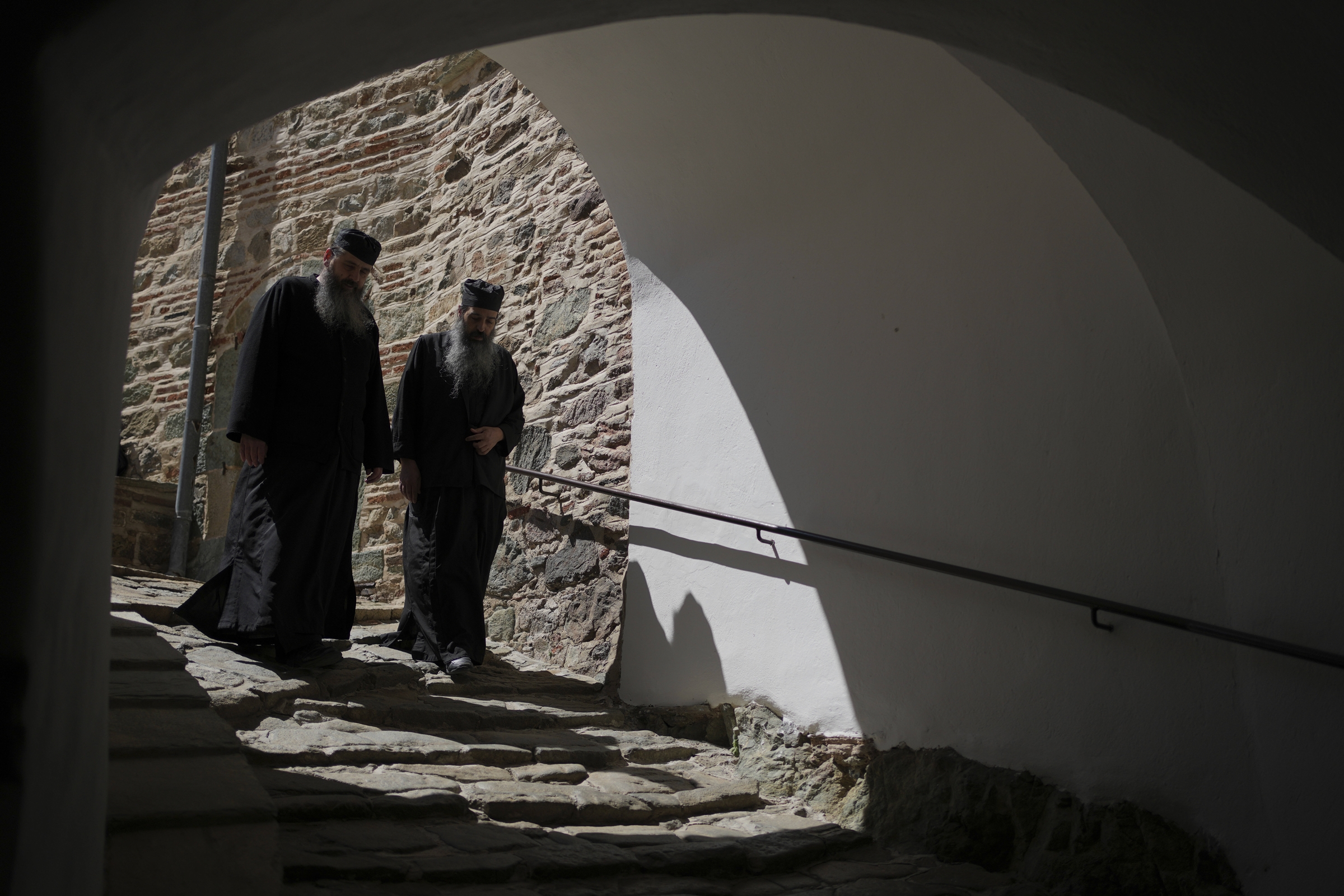 |
Father Kosmas (left) and Father Nyfmon stroll through the monastery.
The seven-story monastery is considered a daring marvel of Byzantine architecture. It has become a symbol of resilience, having been restored after three fires, the most recent in the late 1800s.
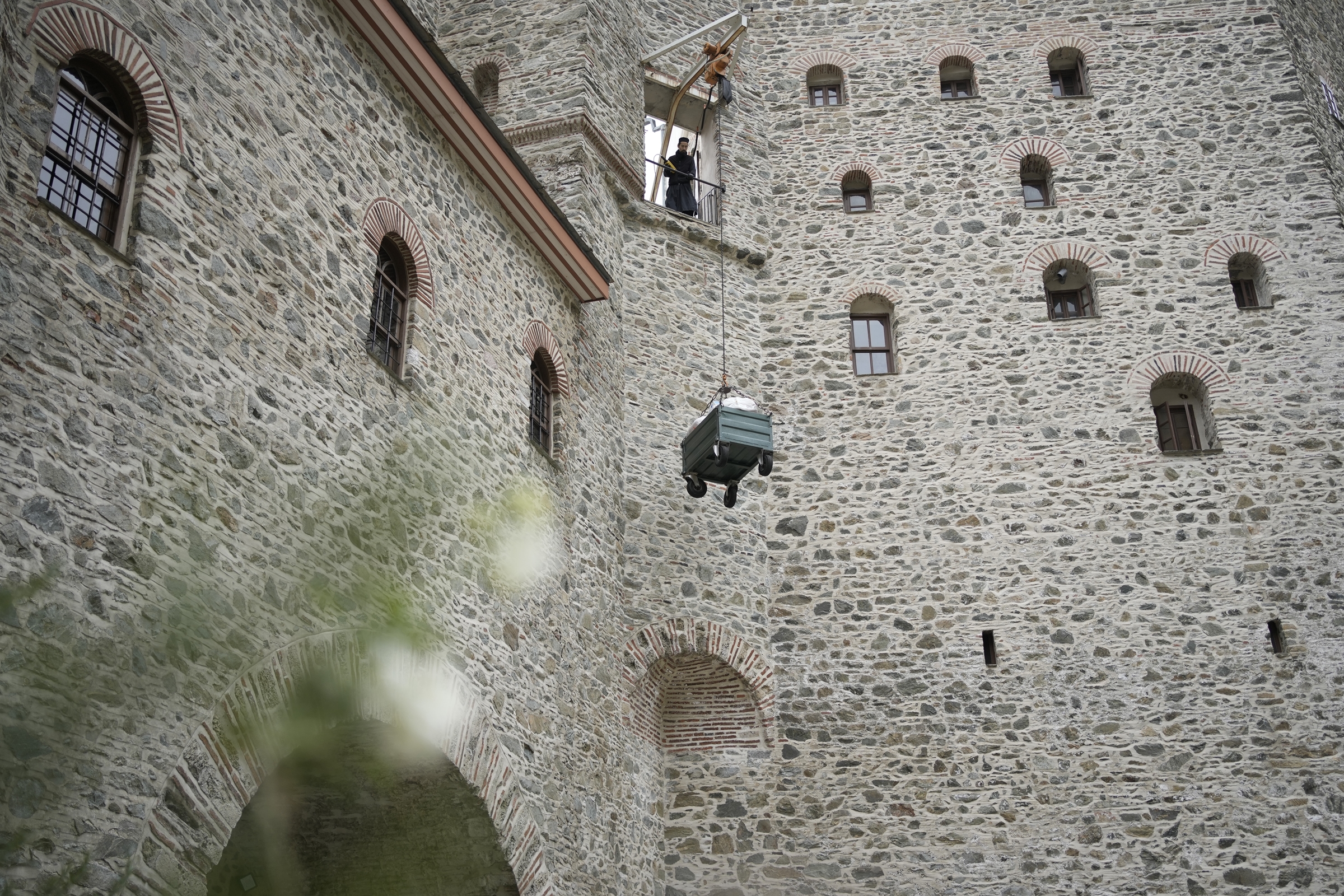 |
Most of the 65 monks at Simonos Petra come from European countries where Orthodoxy is the dominant religion: Romania, Serbia, Russia, Moldova, Cyprus and Greece. There are also monks from China, Germany, Hungary, the US, Australia, France, Lebanon, and Syria.
Pictured is Father Isaiah, 50, originally from China, who grew up in Switzerland and arrived at the monastery in 2006.
"When I was in Switzerland, I tried to understand what I was doing, where I was going, what the meaning of life was," he said, standing on a 5th-floor balcony next to a winch used to hoist baskets of supplies from the storeroom below.
"Essentially, it was a deep search for spiritual life, for the answer to the meaning of life," he said.
Within the monastery, he found brotherhood among monks from 14 countries and decided to stay.
"We are brought together by a few principles, which are love for our neighbor and love for God," Isaiah said. In the human and spiritual connections he experienced at Simonos Petras, "I found a profound answer to everything I was looking for in my youth."
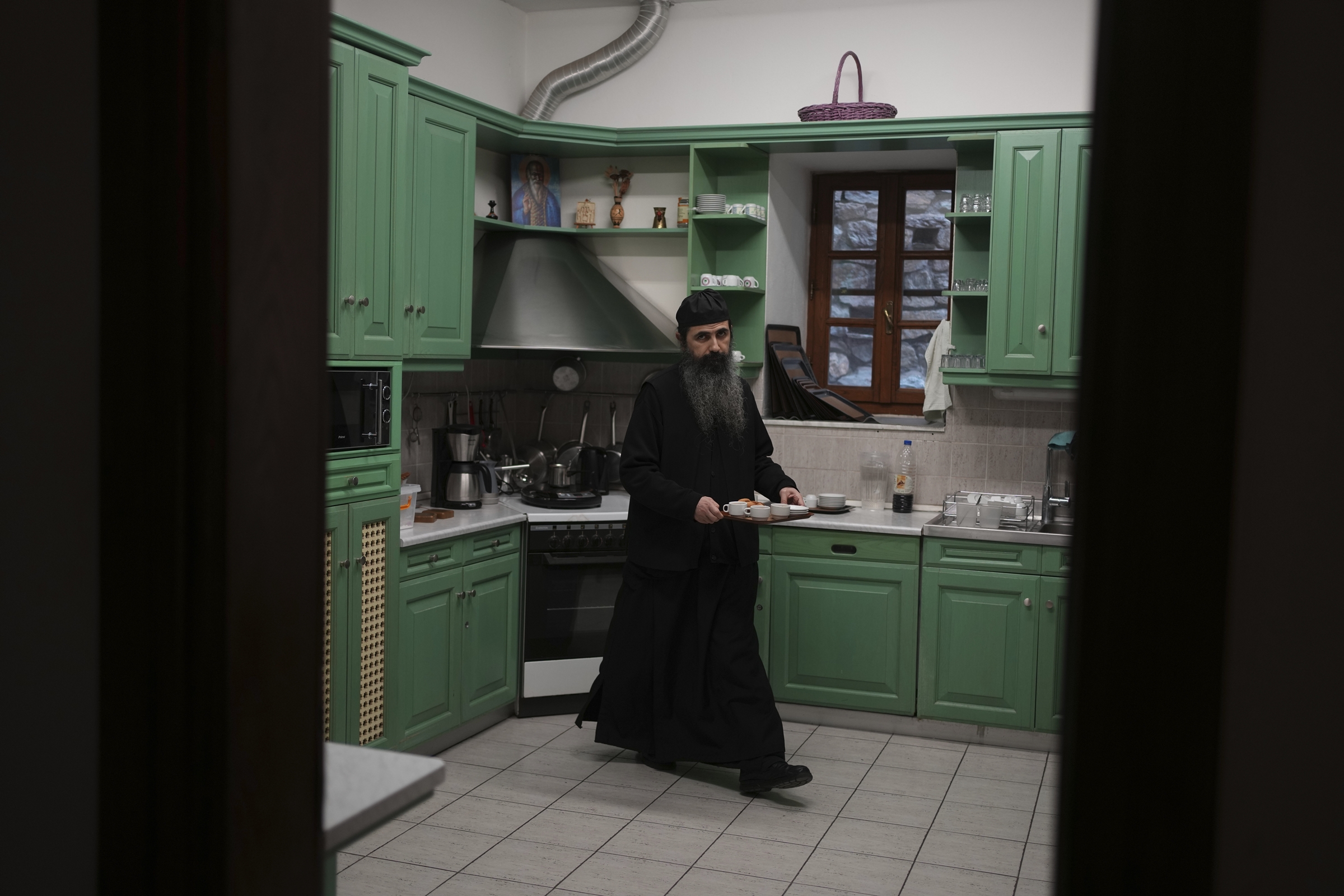 |
Father Serafeim, a Lebanese-Syrian, makes coffee in the kitchen. He has lived in the monastery since 2010 and said Abbot Eliseos and his predecessor, Elder Emilianos, always welcomed foreigners.
"You don't feel like a stranger; you feel from the very beginning that you are an equal member of the brotherhood," Serafeim said. He had come to Greece to study theology in Thessaloniki, a city in the north of the country. "That open spirit has attracted many souls who are searching for the true, deep meaning of life."
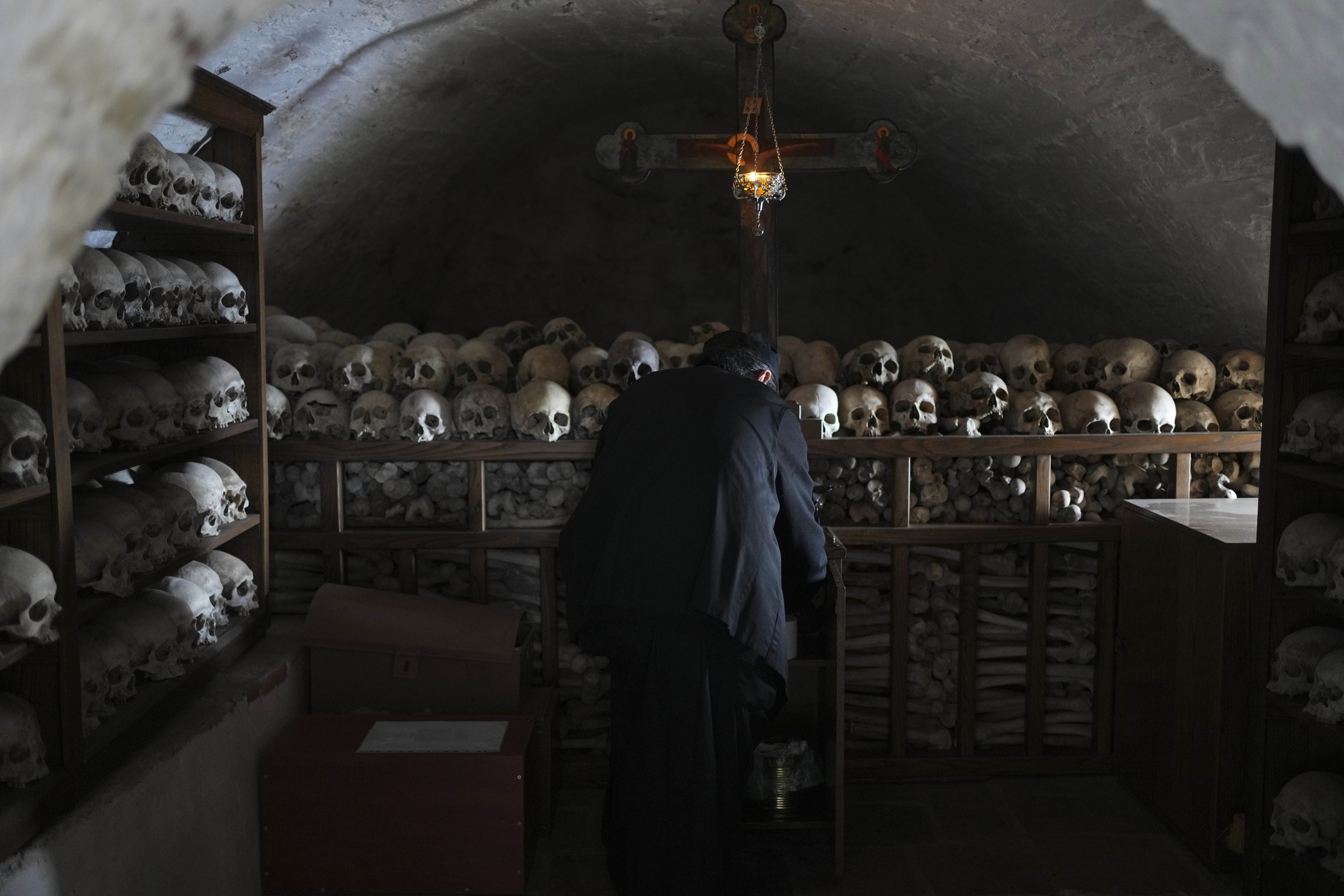 |
Father Serafeim lights candles inside the ossuary, where shelves are stacked with the skulls of deceased monks at Simonos Petra.
 |
Father Simon rings the bell to summon monks and visitors to afternoon prayer.
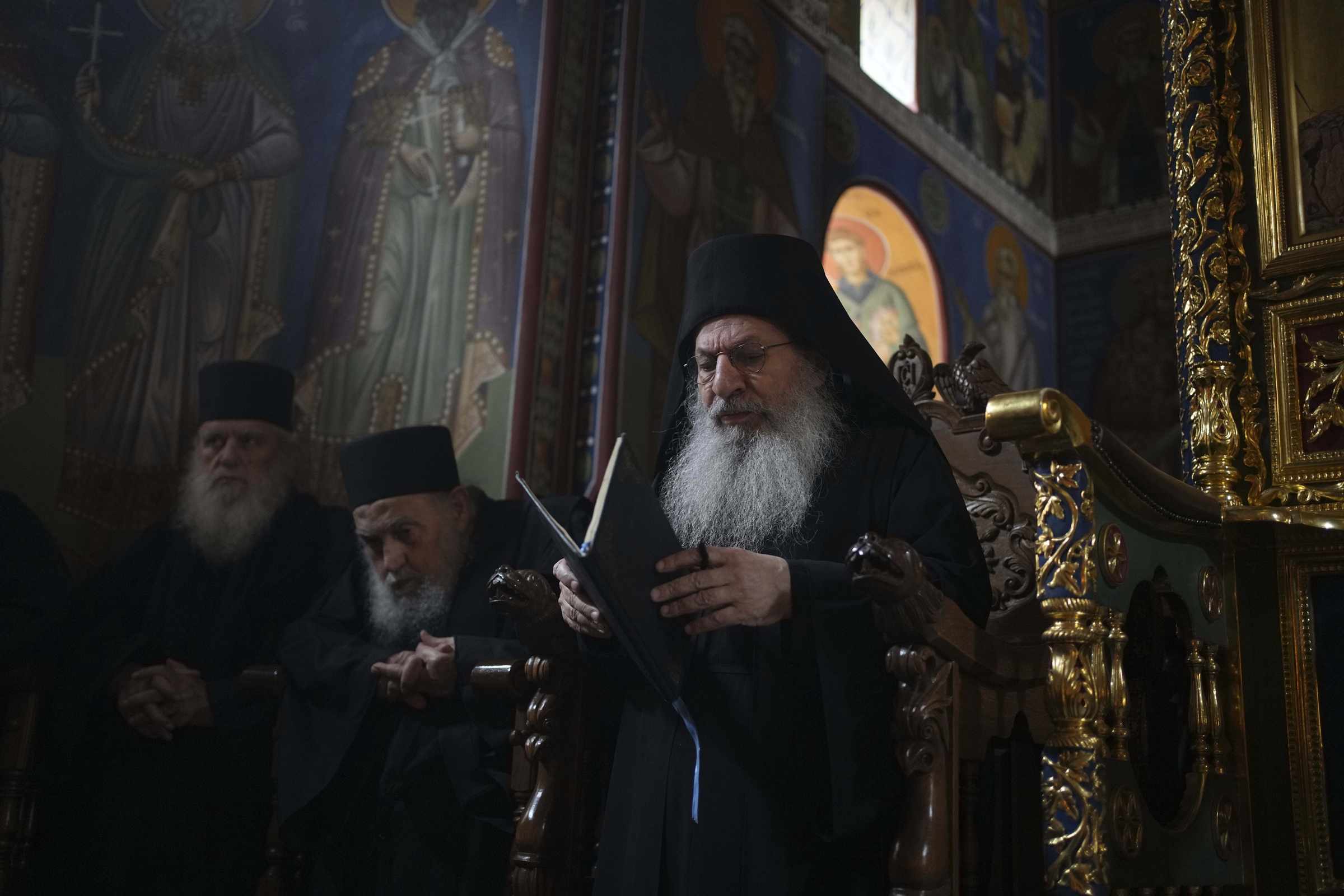 |
Abbot Eliseos reads during vespers.
 |
Monks perform a ritual during prayer.
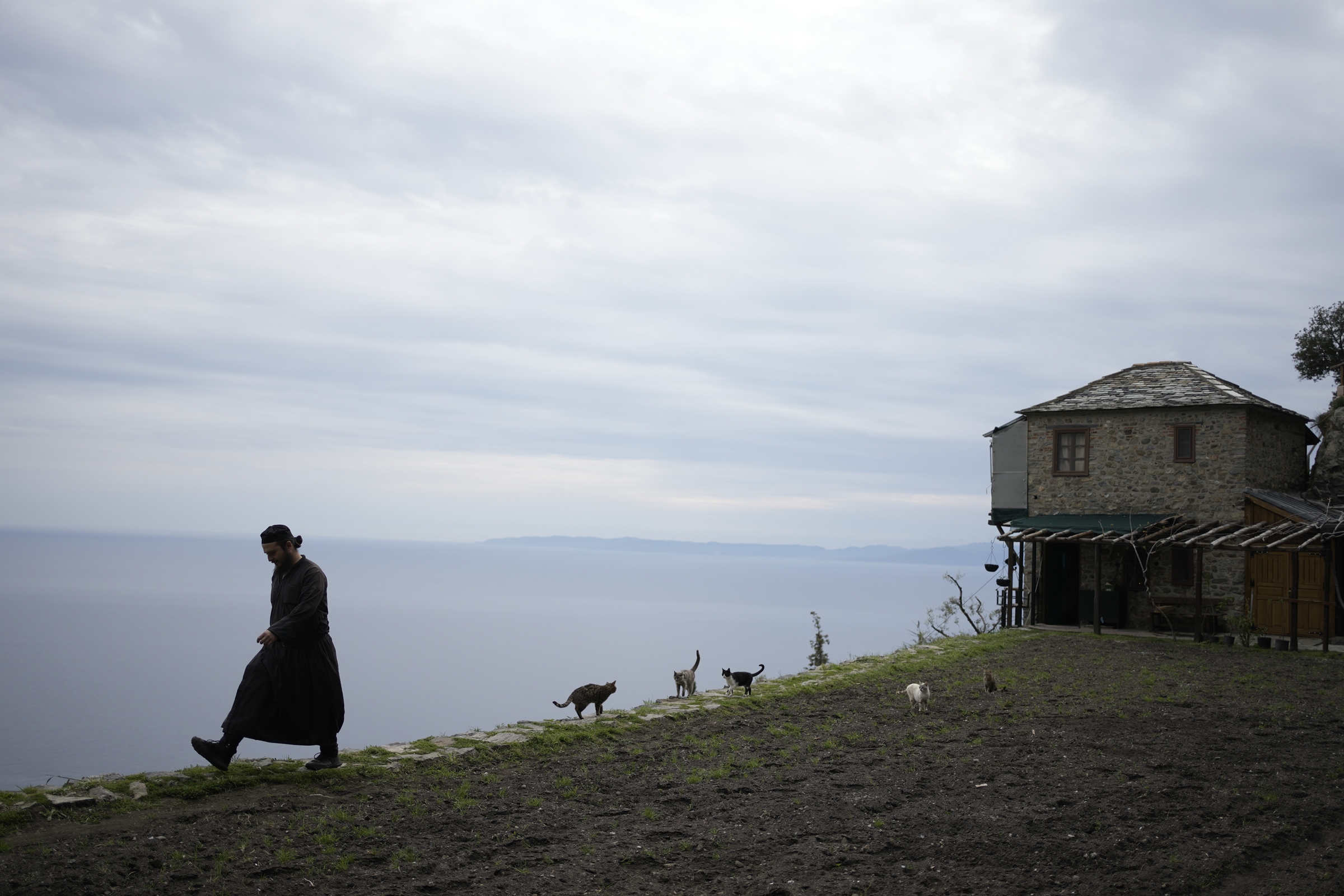 |
Father Paisios walks on the monastery grounds.
Life in the monastery, and throughout Mount Athos, has remained largely unchanged for over 1,000 years since Orthodoxy arrived. A day begins before sunrise with prayers. The monks then tend gardens, do carpentry, make wine, cook, pursue art, organize documents, and perform church duties.
Situated on a hillside surrounded by forest, the monks utilize the land for farming, growing herbs, fruits, and vegetables to supply the monastery kitchen. They have also installed solar panels for sustainable energy.
Hong Hanh (Photo: AP)












